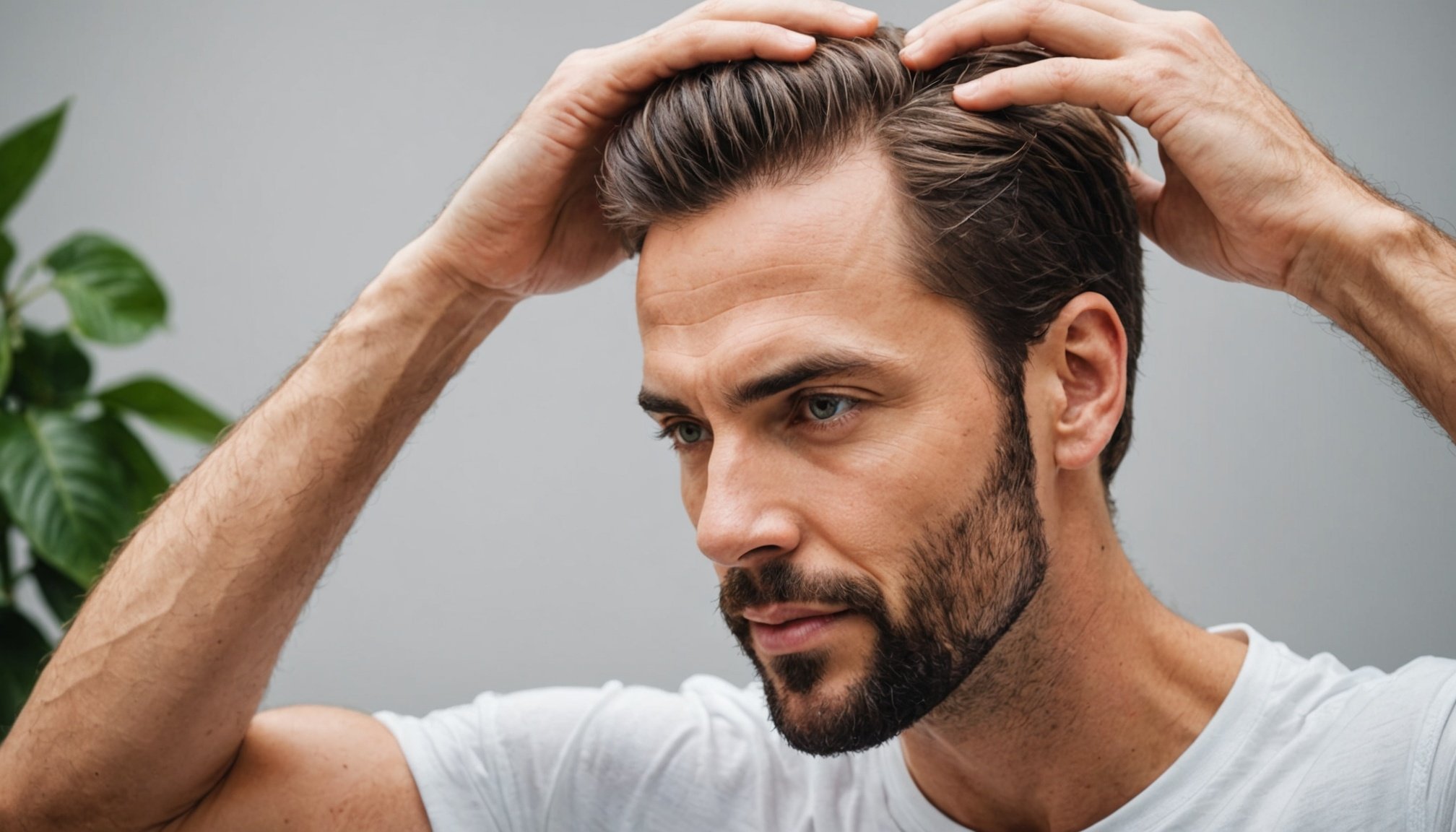Overview of Plant-Based Protein Treatments
Plant-based protein hair treatments have surged in popularity due to their role in hair restoration. These treatments harness natural proteins derived from plants, offering an eco-friendly alternative to synthetic solutions. Plant-based proteins are rich in amino acids that help in strengthening, nourishing, and repairing hair fibers, making them essential in contemporary hair care.
One of the primary advantages of plant-based proteins is their ability to penetrate the hair shaft effectively, addressing damage from within. This results in improved texture and reduced breakage for healthier-looking hair. These treatments are often composed of proteins derived from sources such as soy, quinoa, and rice. Each offers unique properties; for instance, soy protein is known for its moisture-retaining capabilities, while quinoa protein provides exceptional protection against environmental stressors.
This might interest you : Discover verified companions: your guide to leolisted
The effectiveness of these treatments is supported by scientific research, which highlights their ability to improve hair elasticity and resilience. Studies have shown that regular use can result in a notable enhancement in hair strength and overall appearance. As the trend towards nature-based solutions continues, plant-based protein hair treatments offer a sustainable and effective option for those seeking to restore and maintain their hair’s health and vitality.
Comparison of Popular Plant-Based Protein Treatments
Understanding the best plant-based hair treatments can be challenging due to the plethora of options available. To simplify your decision-making, here is a detailed treatment comparison focusing on ingredient effectiveness and user satisfaction.
Additional reading : Discover Cutting-Edge Anti-Aging Skincare Innovations for Women Over 40: The Latest Breakthroughs!
Treatment A: Overview and Benefits
Treatment A employs a unique blend of quinoa protein and shea butter. This combination is celebrated for enhancing moisture retention and strengthening hair strands. Users have reported smoother and shinier hair, making it a popular choice for those targeting hydration.
Treatment B: Overview and Benefits
On the other hand, Treatment B boasts the inclusion of pea protein and aloe vera. This formula is ideal for increasing hair volume and elasticity. It is particularly effective for individuals with brittle hair prone to breakage. The lightweight nature of this treatment is often appreciated for not weighing down finer hair types.
Treatment C: Overview and Benefits
Lastly, Treatment C features amaranth protein and coconut oil. These ingredients contribute to deep nourishment and repair of severely damaged hair. While some users note a heavier feel post-application, many acclaim its restoration capabilities.
Each of these treatments comes with its unique side effects or limitations, often related to individual hair types and conditions. User reviews generally reflect satisfaction, with Treatment C receiving applause for damage repair, though some point out the weight issue in certain hair types.
Application Methods for Plant-Based Treatments
Exploring effective application techniques for plant-based treatments can significantly enhance your hair care routine. These treatments often involve applying protein treatments to strengthen and nourish hair. It’s vital to understand the recommended methods for applying protein treatments. One efficient approach is to first cleanse the hair thoroughly, ensuring it’s damp before starting the treatment application. This aids in better absorption and uniform distribution.
Adjusting the frequency and duration is crucial for achieving optimal results. Generally, protein treatments are recommended every 4 to 6 weeks, depending on hair condition. Consistency is key, so finding a routine that suits your hair type can greatly improve hair health.
To seamlessly incorporate these treatments into an existing hair care routine, consider these tips:
- Space out protein treatments and moisturising sessions to maintain hair balance.
- Follow up with a moisturising conditioner after treatment to restore softness.
- Tailor your schedule based on hair response, monitoring for any signs of protein overload, such as excessive dryness.
Adopting these techniques, you can enrich your hair care routine effectively, maximising the benefits of plant-based treatments while maintaining hair vitality.
Selecting the Right Treatment Based on Hair Type
Understanding your unique hair type is key to choosing personalized treatment that addresses specific needs. First, evaluate your hair characteristics: texture, porosity, and elasticity. These factors dictate the approach that ensures the best results for your mane.
Evaluating Your Hair Type
To determine your hair texture, note if strands are fine or coarse. Porosity can be assessed by examining moisture retention—high porosity absorbs water quickly, while low porosity resists moisture. Lastly, elastic strands indicate healthy hair, yet brittle strands may signal damage.
Matching Treatments to Concerns
Once you’ve established your hair type, apply tailored solutions to target key issues. For dryness, opt for nourishing oils and hydrating masks. Damaged hair benefits from strengthening proteins and reconstructive serums. Thinning hair requires volumizing products and gentle scalp care to stimulate growth.
The Role of Patch Tests
Patch tests are essential before commencing any treatment regimen. Apply a small amount of the chosen product on a discreet section of your scalp. Monitoring for irritation or adverse reactions is crucial. This step ensures the treatment is safe and suitable, thereby maximizing positive outcomes without unnecessary risks.
Benefits of Plant-Based Protein Treatments
Plant-based protein treatments offer a myriad of hair health benefits, making them a preferred choice for many individuals seeking natural remedies. One of the primary advantages is their ability to strengthen and repair damaged hair, which is essential for maintaining overall hair health. These treatments provide hair with necessary proteins that mend and fortify hair strands, reducing breakage and preventing future damage.
In addition to strengthening, plant-based protein treatments enhance shine and manageability. By replenishing and nourishing the hair, these treatments can transform dull, lifeless strands into vibrant and silky locks. This improvement in texture and appearance not only boosts confidence but also simplifies daily hair care routines.
Another significant benefit is their role in reducing hair loss and promoting growth. By addressing issues such as breakage and weak hair strands, plant-based treatments help maintain healthier hair, which can lead to improved growth over time. The natural composition of these remedies makes them a gentle option for various hair types and concerns, ensuring that individuals can enjoy the full spectrum of treatment advantages without adverse effects. Integrating these natural solutions into a regular hair care routine can yield substantial, tangible benefits for long-term hair health.
User Testimonials and Success Stories
Exploring user experiences reveals much about the treatment reviews and levels of customer satisfaction. Numerous real-life user testimonials highlight distinct success stories, showcasing the effectiveness of various approaches.
One common theme among these testimonials is the transformative nature of certain treatments. Users frequently report significant changes after consistent application, leading to enhanced well-being. A striking example is Jane’s story, who described her journey with a particular method. Initially sceptical, Jane followed the procedure outlined in the treatment reviews. Over time, she witnessed remarkable improvements in her physical appearance and confidence, reflecting high customer satisfaction.
Another recurring motif in user experiences is the emphasis on continued application. Many success stories underline the necessity of adhering to recommendations consistently, ultimately resulting in substantial gains. This pattern is noted in a multitude of transformations, underscoring a shared viewpoint among satisfied customers.
These narratives collectively suggest that positive outcomes hinge on a diligent commitment to the chosen path. Through understanding these experiences, potential users can make informed decisions, catered to their needs. Such customer satisfaction stories serve as a testament to the possibilities and promise of dedicated treatment adherence.
Scientific Backing for Plant-Based Treatments
In recent years, research studies have increasingly highlighted the potential benefits of plant-based treatments. Dermatological research is pivotal in understanding these natural options. Significant studies have examined their treatment efficacy, pointing out specific mechanisms by which certain plant extracts potentially support hair health.
For instance, research focusing on botanical ingredients like saw palmetto and aloe vera has shown promise for individuals experiencing hair thinning. These studies suggest that these plants can potentially support scalp health and promote hair growth by reducing inflammation and supporting follicle function.
Furthermore, peer-reviewed articles emphasize the science behind treatments, proposing that botanical compounds can be as effective, if not more so, than conventional chemical-based treatments. This shift towards plant-based solutions is partly due to the growing demand for natural products with fewer side effects.
The importance of evidence-based approaches cannot be overstated, as they provide a solid foundation for developing effective hair care regimens. By relying on peer-reviewed research, consumers can make informed decisions about the products they choose. Thus, a comprehensive understanding of treatment efficacy grounded in scientific inquiry is vital for advancing both consumer knowledge and product innovation in the beauty industry.
Side Effects and Limitations of Treatments
When considering plant-based protein treatments, it’s essential to weigh potential side effects. Common side effects can include mild allergic reactions such as redness, itching, or irritation, particularly on sensitive skin. These reactions are generally rare and can diminish with regular, moderate use. However, it is critical to remain vigilant about any adverse effects.
Conditions to Avoid
Certain conditions warrant caution with these treatments. For those with known allergies to specific plant proteins, avoiding treatments containing those ingredients is wise. Additionally, individuals with compromised skin barriers or dermatological conditions may experience heightened sensitivity. In such cases, a consultation with a healthcare provider is advisable before use.
Recommendations for Safe Use
To ensure safe use and minimise any potential side effects, consider these guidelines:
- Start with a patch test to ensure no allergic reaction.
- Gradually introduce treatments to your routine to monitor your skin’s tolerance.
- Adhere strictly to recommended application methods and dosages as indicated by the manufacturer.
- If any adverse reactions occur, discontinue use immediately and consult a dermatologist for further guidance.
Understanding these limitations and exercising caution can lead to effective and safe use of plant-based protein treatments.











